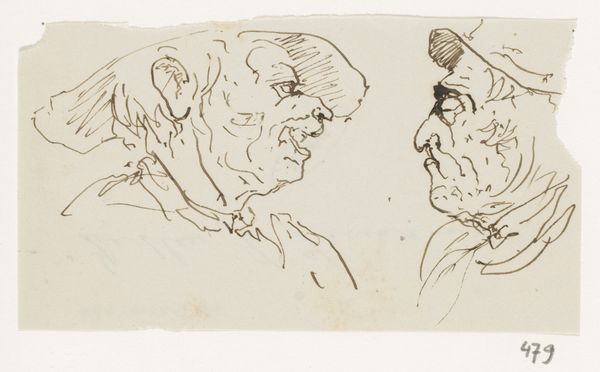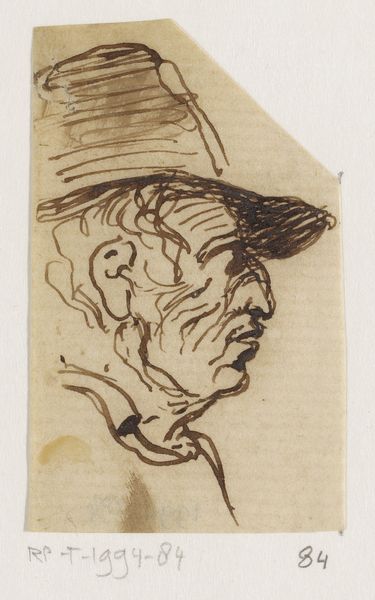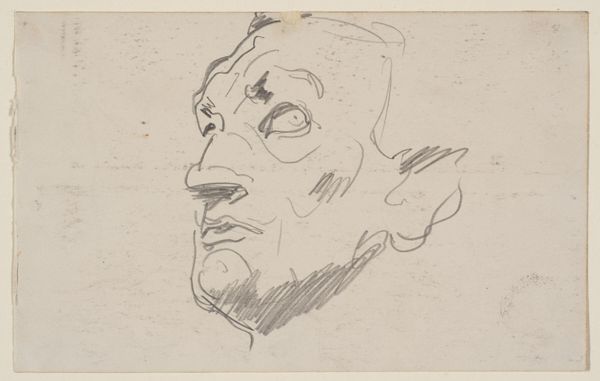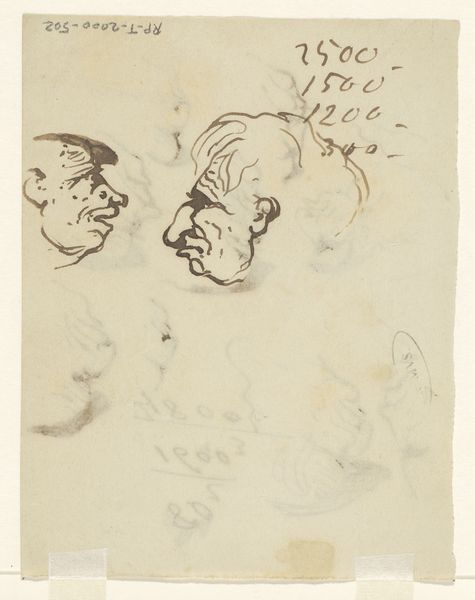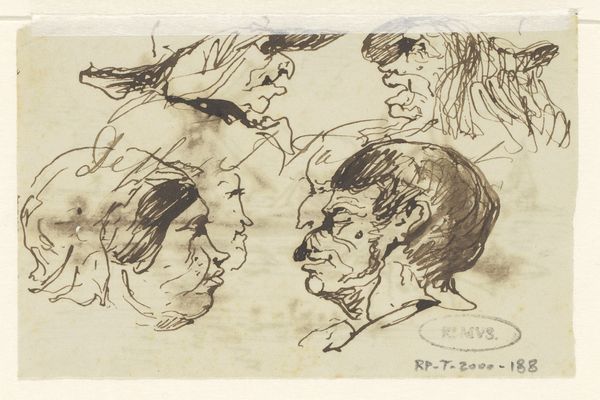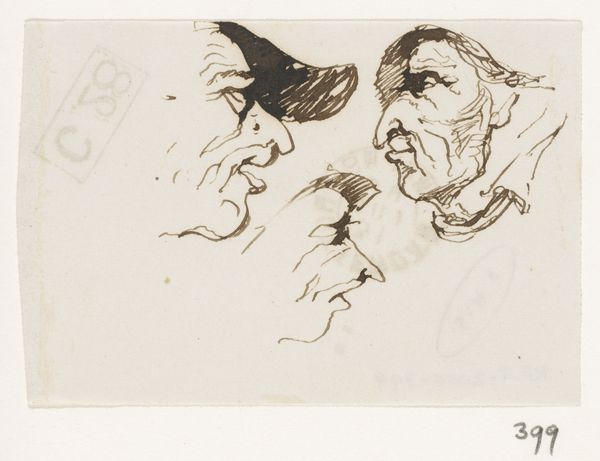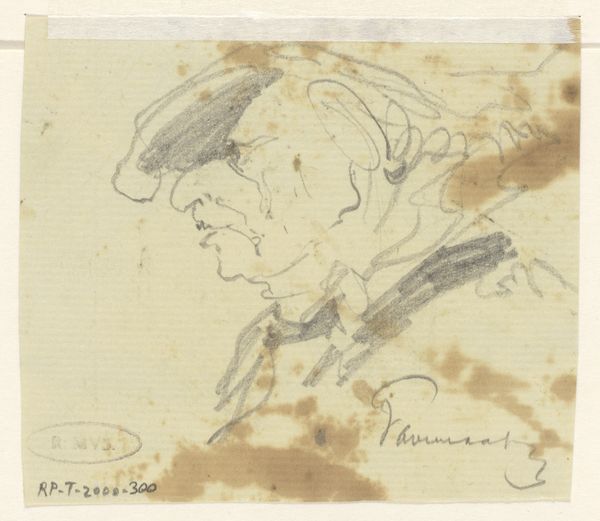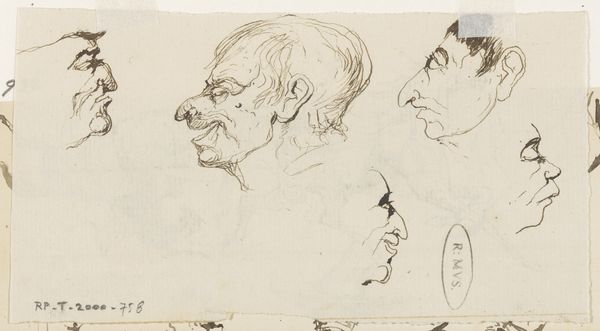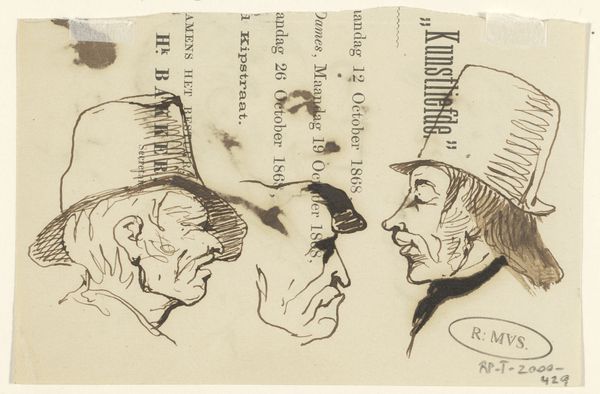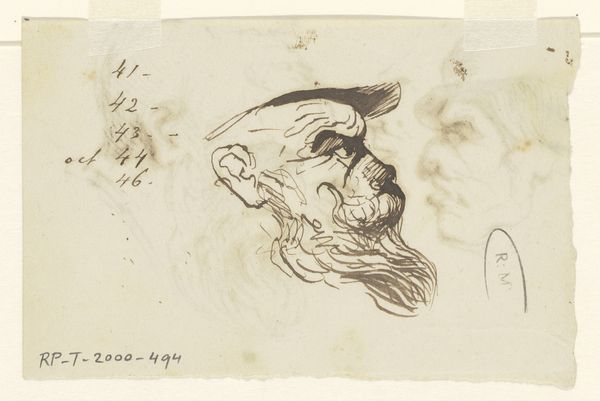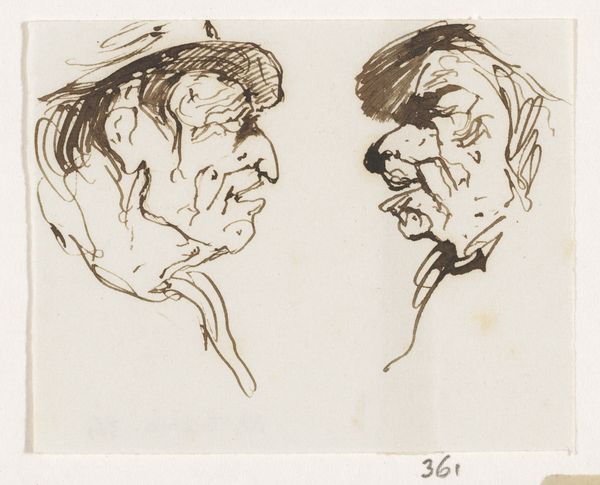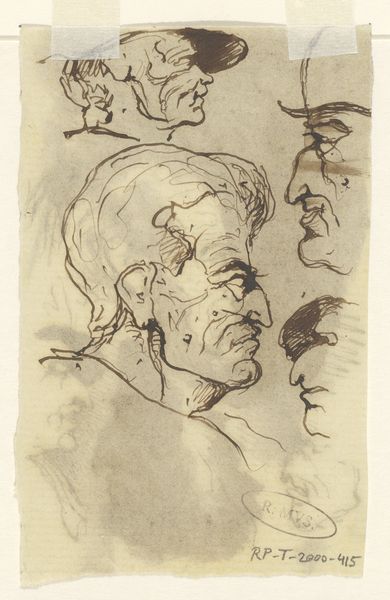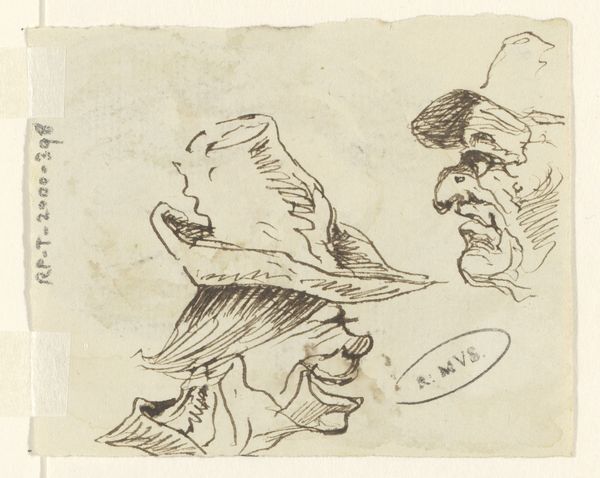
drawing, print, paper, pencil, graphite
#
portrait
#
drawing
# print
#
pencil sketch
#
paper
#
pencil
#
graphite
#
realism
Dimensions: 139 × 161 mm
Copyright: Public Domain
Editor: Here we have Felicien Rops' "Sketch of Ferdinand Marinus," created around 1857. It’s a graphite drawing on paper, and I’m struck by how raw and immediate it feels. What draws your eye to it? Curator: Well, let's consider the materiality of this sketch. Rops chose readily available and inexpensive materials - graphite and paper. This wasn't about preciousness; it was about the act of observation and recording. How does this immediacy connect to the social function of portraiture at the time? Was it about capturing likeness or something else? Editor: That's a good point. It almost feels like he's capturing a fleeting moment, a character rather than a perfect image. It's interesting that he would do that. Curator: Exactly. Think about the means of production here. Graphite allows for easy corrections, erasures, and a range of tonal values. This suggests a process of constant adjustment, of grappling with the subject. It shows labor! What does that tell us about the relationship between the artist and the sitter? Editor: That's true, it doesn’t hide its process. There are lots of visible marks that aren’t quite erased. Do you think it’s meant to reflect Marinus' social status, or something about Rops' views of him? Curator: It could. Or, perhaps it reflects the changing role of portraiture itself. With the rise of photography, artists were no longer solely responsible for perfect representations. They could explore more subjective interpretations. How does this work, then, challenge or uphold traditional notions of 'high art' when contrasted with, say, an academic painting? Editor: I never really considered it like that, comparing it with photos and academic work of the time. Curator: Right. By focusing on process and readily available materials, Rops arguably democratizes the act of portraiture. Editor: So, by using humble materials, Rops is actually making a statement about the changing role of art itself. That gives me a whole new perspective on it!
Comments
No comments
Be the first to comment and join the conversation on the ultimate creative platform.
